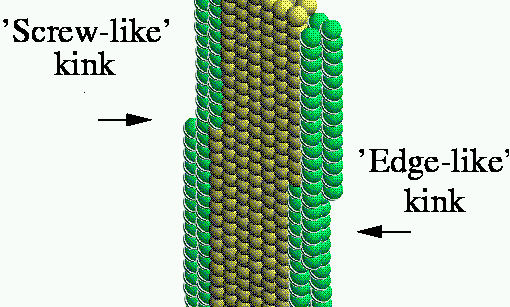Inside the atom, the weird effects of quantum mechanics rule. Electrons have no definite position or velocity; the results of experiments can only be expressed in terms of probabilities. One of the weirdest effects is quantum tunneling: a particle can escape a trap even when it does not have the energy to do so. Some forms of radioactive decay are due to the quantum tunneling of alpha particles out of the nucleus. Scanning tunneling microscopes rely on electrons tunneling from the scanning tip to the surface being imaged.
For larger objects (atoms and collections of atoms), quantum fluctuations are unimportant and a simpler theory, classical mechanics, is sufficient. For example, tunneling of atoms is unusual. Because they are so heavy and large, they tunnel through barriers only rarely or under special circumstances. There has nonetheless been growing experimental evidence over many years - involving quantum creep, dissipation, and low-temperature scaling behavior in nanodevices - that some kind of atomic tunneling is important in metals.
At root, the reason atoms don't tunnel is that their tunneling barriers and distances are set by the much lighter electrons. The tunneling of a proton over a barrier one Rydberg high and one Bohr radius wide is suppressed by the exponential of Sqrt(2 Mp Ry a02) = Sqrt(Mp / me) ~ 42.85: a factor of 10-19. When atoms tunnel, one looks for a special reason.

We and colleagues at CAMP at the Technical University of Denmark calculated the quantum tunneling rates of a crystalline defect - a dislocation kink - in copper, using a classical interatomic potential. (Usually one turns to quantum mechanics to get the basic parameters for a classical calculation: here we use classical mechanics to get the parameters for a quantum calculation.) The dislocation is split into two partial dislocations (green in the figure above), separated by a stacking fault (yellow). The kinks on each partial dislocation are spread out among hundreds of atoms. Perversely, it is because the kink is so large that it tunnels well: the motion is spread among many atoms, so each each atom needs to tunnel only a short distance. Our calculation shows that the kink should tunnel easily through the barrier they investigated, and has such a small effective mass (1/130 of the mass of a copper atom) that quantum tunneling of kinks should also occur in many other circumstances.
It will be a surprise to many physicists that there is a completely unexplored source of quantum fluctuations in crystals. Working out the ramifications for nanodevices and metals at low temperatures will be an exciting task.
This research was paid for by the US and Danish Governments through the National Science Foundation (NSF KDI #9873214), the Cornell Theory Center, and through the Center for Atomic-Scale Materials Physics in Denmark.
